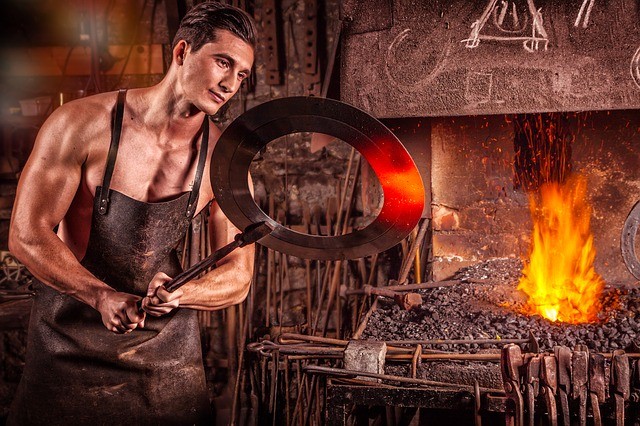Malleability refers to the ability of metal to be stretched or compressed into thin sheets through applied pressure. It is measured by the compressive stress a metal can tolerate without breaking or tearing. This property is unique to certain metals and considered useful for many different applications, which range from scientific to everyday use.
Some of the well-known malleable metals include gold, silver, iron, aluminum, copper, and tin. Most of them are extensively used for applications that require flat metal pieces. Gold and silver, for instance, are used for making coins and jewelry, while iron and aluminum are often compressed into panels, which are used for covering machines and structures.
Copper, on the other hand, while malleable, is too soft. It would easily break when hammered or rolled on. When alloyed with tin, however, it forms bronze, which is a tougher and more malleable metal. Brass, which is an alloy of copper and zinc, is malleable, too.
Why Metals Are Malleable
You must be wondering why, despite metal’s natural hardness, it remains malleable. Rock, wood, and some plastic materials are also hard but they do not transform into thin sheets when pressed like metals do. You have to look into an electron microscope to find out why. The secret lies in metal’s unique molecular structure.
A material’s malleability isn’t necessarily related to its hardness, but to the density and arrangement of the atoms that compose it. Non-malleable materials usually have atoms that are far apart from each other and don’t line up to hold one another. As a result, their molecular structure can easily break apart when struck by a harder object.
The atoms forming malleable metals, in contrast, are more closely attached but not completely bonded. Since each atom has valence electrons moving constantly around it, the atoms within each grain can move freely without disintegrating. Imagine the structure to be an array of metal ions or kernels immersed in a “sea” of mobile valence electrons.
Why Malleability Levels Vary
Each group of atoms that are uniformly arranged is called a grain or crystal. The bigger the grains of a particular metal, the higher its malleability is, simply because there are fewer grain boundaries that can form a fault where breakage can occur.
Metallurgists are also working to increase the size of each grain and enhance its response to pressure to allow malleable metals to be stretched further. They do this by choosing the right metals to alloy. Apart from the metal types, there are other factors that can influence the result, such as the amount of each metal used in the alloy, the heating and curing process, and the impurities present within the resulting alloy.
This information is useful for sheet metal suppliers who want to know more about the products they are selling. Understanding the malleability of each metal allows them to distinguish high-quality products from poor-quality ones. If they choose to outsource from a reputable metal provider like Rotax Metals, however, they can have a better chance at finding the materials they need.
Sources:
Metallurgy Matters: Phases, structures, and the influences of temperature, TheFabricator.com
METALLIC STRUCTURES, ChemGuide.co.uk
What are examples of malleable materials?, Reference.com


